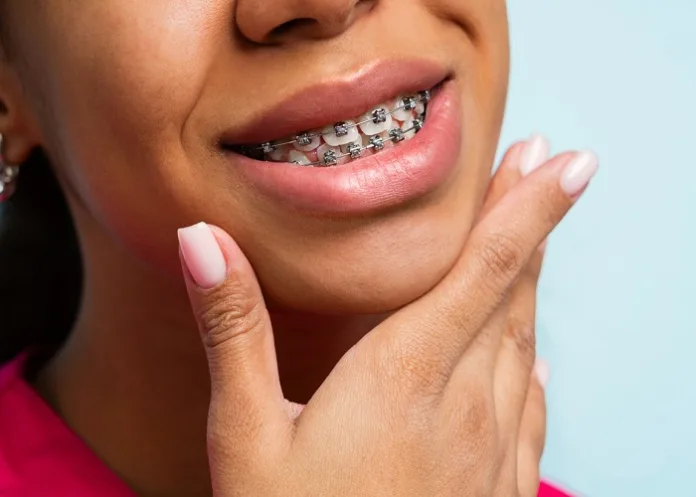A new tool being developed by the University of Copenhagen and 3Shape will help orthodontists correctly fit braces using artificial intelligence and virtual patients, and can predict how teeth will move to ensure the braces are neither too loose nor too tight.
Orthodontists use the knowledge gained from their education and experience to perform their jobs, but without the possibilities that a computer can provide for predicting final results.
The new tool, developed in a collaboration between the University of Copenhagen’s Department of Computer Science and the company 3Shape, will now make it possible to simulate how braces should fit – to give the best result without too many unnecessary inconveniences.
MedicalXpress reports that the tool has been developed with the help of scanned imagery of teeth and bone structures from human jaws, which AI then uses to predict how best the braces should be designed.
Their simulation, they said, was able to let an orthodontist know where braces should and shouldn’t exert pressure to straighten teeth.
“Currently, these interventions are based entirely upon the discretion of orthodontists and involve a great deal of trial and error. This can lead to many adjustments and visits to the orthodontist’s office, which our simulation can help reduce in the long run,” said Professor Kenny Erleben, who heads IMAGE (Image Analysis, Computational Modelling, and Geometry), a research section at UCPH’s Department of Computer Science.
Helps predict tooth movement
It can be difficult to predict exactly how braces will move teeth because teeth continue shifting slightly throughout a person’s life. These movements differ from mouth to mouth.
“The fact that tooth movements vary from one patient to another makes it even more challenging …which is why we’ve developed a new tool and a dataset of different models,” said Torkan Gholamalizadeh, from 3Shape and a PhD from the Department of Computer Science.
As an alternative to the classic bracket and braces, a new generation of clear braces, known as aligners, has gained ground. Aligners are designed as a transparent plastic cast of the teeth that patients fit over their teeth.
Patients must wear aligners for at least 22 hours a day, and they need to be swopped for new and tighter sets every fortnight.
Because aligners are made of plastic, the teeth also change the contours of the aligner itself, which the new tool also takes into account.
“As transparent aligners are softer than metal braces, calculating how much force it takes to move the teeth becomes even more complicated. But it’s a factor we’ve taught our model to consider, so one can predict tooth movements when using aligners as well,” said Gholamalizadeh.
Digital twins can improve treatment
Researchers designed a computer model that creates accurate 3D simulations of a patient’s jaw, to help dentists and technicians plan the best treatment.
To create these simulations, they mapped sets of human teeth using detailed CT scans, and of the small, fine structures between the jawbone and the teeth known as periodontal ligaments – a kind of fibre-rich connective tissue that holds teeth firmly in the jaw.
This type of precise digital imitation is referred to as a digital twin – and in this context, the researchers built up a database of “digital dental patients”.
Their database also contains other digital patient types that could one day be useful elsewhere in the healthcare sector.
“We now have a database of digital patients that, besides simulating aligner designs, can be used for hip implants, among other things. In the long run, this could make life easier for patients and save resources for society,” said Erleben.
The area of research using digital twins is relatively new, and, currently, Erleben’s database of virtual patients is a world leader.
However, it will need to get even bigger if digital twins are to take root and benefit the sector and society.
Furthermore, the tool must clear various regulatory hurdles before it is rolled out for , which is what the researchers hope to see in the future.
The findings are published in the journal IEEE Access.
Study details
Deep-Learning-Based Segmentation of Individual Tooth and Bone With Periodontal Ligament Interface Details for Simulation Purposes
Peidi Xu, Torkan Gholamalizadeh, Faezeh Moshfeghifar et al.
Published in IEEE Access Volume 11
Abstract
The process of constructing precise geometry of human jaws from cone beam computed tomography (CBCT) scans is crucial for building finite element models and treatment planning. Despite the success of deep learning techniques, they struggle to accurately identify delicate features such as thin structures and gaps between the tooth-bone interfaces where periodontal ligament resides, especially when trained on limited data. Therefore, segmented geometries obtained through automated methods still require extensive manual adjustment to achieve a smooth and organic 3D geometry that is suitable for simulations. In this work, we require the model to provide anatomically correct segmentation of teeth and bones which preserves the space for the periodontal ligament layers. To accomplish the task with few accurate labels, we pre-train a modified MultiPlanar UNet as the backbone model using inferior segmentations, i.e., tooth-bone segmentation with no space in the tooth-bone interfaces, and fine-tune the model with a dedicated loss function over accurate delineations that considers the space. We demonstrate that our approach can produce proper tooth-bone segmentations with gap interfaces that are fit for simulations when applied to human jaw CBCT scans. Furthermore, we propose a marker-based watershed segmentation applied on the MultiPlanar UNet probability map to separate individual tooth. This has advantages when the segmentation task is challenged by common artifacts caused by restorative materials or similar intensities in the teeth-teeth interfaces in occurrence of crowded teeth phenomenon. Code and segmentation results are available at
MedicalXpress article – Straightening teeth? AI can help (Open access)
See more from MedicalBrief archives:
Derided theories of two British orthodontists now have a cult following
Dentists warn of permanent damage from ‘aligners’ ordered online
Jail for millionaire French dentist who mutilated hundreds of patients

